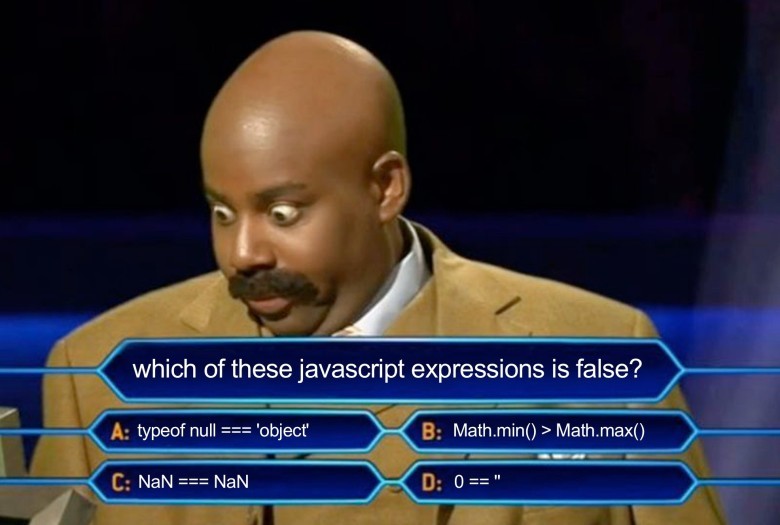views

The Million-Dollar JavaScript Question
Imagine you're under the hot lights, facing the host, and the audience is silent. The question on the screen isn't about history or science, but something even more perplexing for many: JavaScript. This viral meme takes the classic "Who Wants to Be a Millionaire" format and turns it into a hilarious, yet all too real, challenge for anyone who codes in JS. The question: "Which of these JavaScript expressions is false?"
This meme hits home for every front-end developer and anyone learning web development. JavaScript, for all its power and popularity, is famous for its "quirks" – little surprises that can trip up even experienced programmers. Let's break down why this JavaScript meme causes so much delightful confusion.
Option A: typeof null === 'object' This is one of the most famous JavaScript gotchas. Intuitively, you might think null isn't an object. But in JavaScript, typeof null actually returns the string 'object'. This is a long-standing bug in the language that dates back to its early days, and it's something every JS developer just has to remember. So, this expression is true.
Option B: Math.min() > Math.max() This one looks tricky! When Math.min() is called without any arguments, it returns Infinity. And Math.max() called without arguments returns -Infinity. So, the expression becomes Infinity > -Infinity, which is absolutely true. Infinity is always greater than negative infinity!
Option D: 0 === "" Here, we're using the strict equality operator (===). This operator checks both the value AND the type of the two things being compared. 0 is a number, and "" (an empty string) is a string. Even though 0 == "" (using the loose equality ==) would be true because JavaScript tries to convert them, 0 === "" is false because their types are different. This highlights the importance of using === to avoid unexpected type conversions.
Option C: NaN === NaN And now, the big reveal, the expression that is false. NaN stands for "Not-a-Number." It's a special value in JavaScript that represents something that isn't a valid number (like the result of 0 / 0 or parseInt('hello')). The truly bizarre thing about NaN is that it is the only value in JavaScript that is not strictly equal to itself. If you type NaN === NaN into your browser console, it will return false. This is a fundamental rule of NaN designed to prevent erroneous comparisons when dealing with invalid numerical operations. To check if something is NaN, you should use isNaN() or Number.isNaN().
So, the answer that would make the Millionaire contestant sweat, and the answer to this viral programming meme, is C: NaN === NaN.
This meme is more than just programmer humor; it's a fantastic, quick lesson in JavaScript's weird parts. It reminds us that while coding can be logical, sometimes, especially with JS, you just have to know the quirks to truly master the language. It's why this coding meme is so relatable and funny to developers worldwide!




















Comments
0 comment